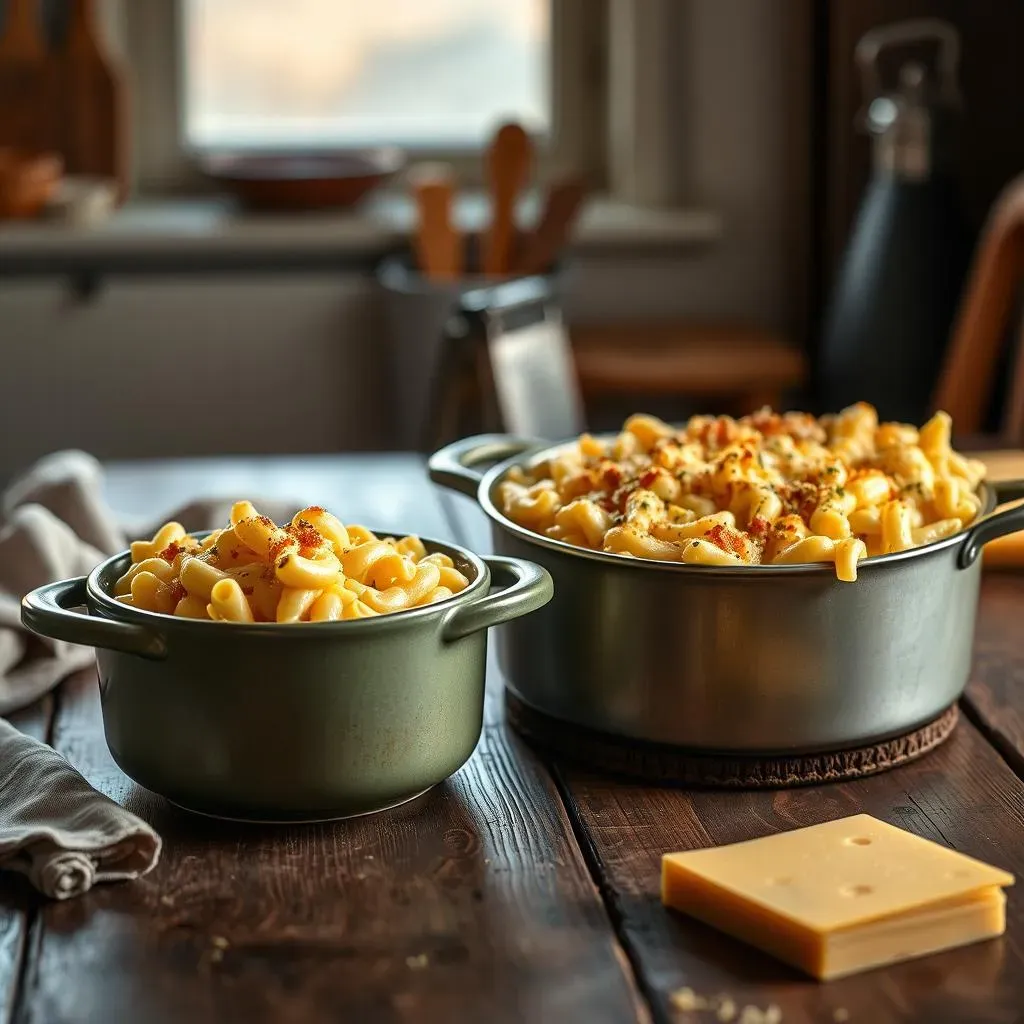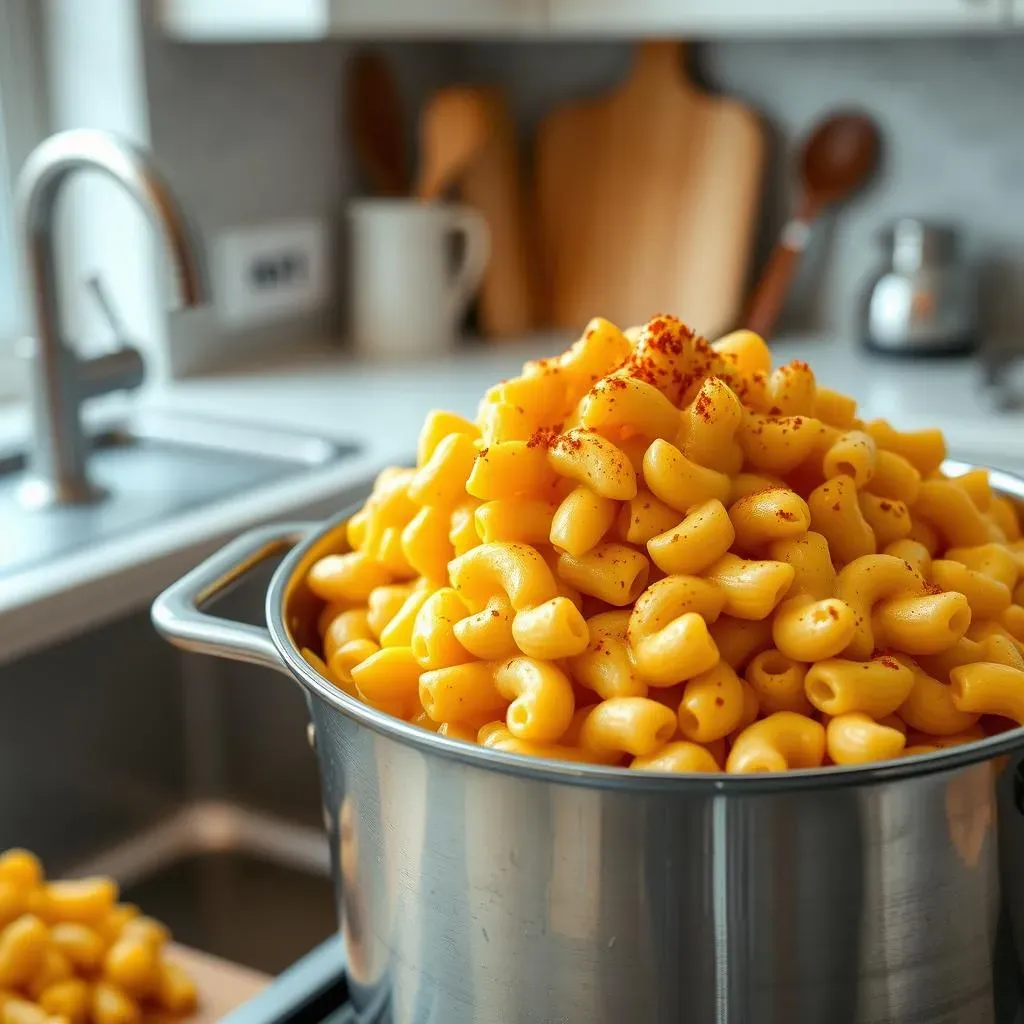Table of Contents
Craving creamy, cheesy mac and cheese? You've got options! The age-old debate boils down to this: **one-pot mac and cheese vs multi-pot mac and cheese**. Are you team minimal dishes, where everything cooks together in a single glorious pot? Or do you prefer the classic, multi-step method, believing it yields superior results? This article breaks down the key differences between these two popular approaches. We'll explore the ingredients and techniques each method employs, giving you the inside scoop on how they work. Tired of dish duty? We'll compare the cleanup involved. Most importantly, we'll tackle the ultimate question: does cooking your mac and cheese in one pot or several impact the final, delicious taste? Let's find out which method reigns supreme in the battle of one-pot mac and cheese vs multi-pot mac and cheese!
OnePot Mac and Cheese vs MultiPot: Understanding the Methods

OnePot Mac and Cheese vs MultiPot: Understanding the Methods
The One-Pot Wonder
So, you've heard about this magical thing called one-pot mac and cheese. The name pretty much gives it away, right? It's all about simplicity. Imagine tossing your pasta, liquid – usually milk or water (sometimes both!), and even your cheese right into a single pot. Yep, all together. The pasta cooks in the liquid, releasing starches that help create a creamy sauce as the cheese melts in. It's like a shortcut to comfort food, perfect for those nights when you want something yummy without a mountain of dishes. Think of it as the culinary equivalent of a "choose your own adventure" where the destination is always cheesy goodness, but the path is surprisingly streamlined.
The Classic Multi-Pot Maneuver
Now, let's talk about the traditional way, the multi-pot method. This is how many of us probably learned to make mac and cheese. You cook your pasta separately in one pot of boiling, salted water – you know, the usual drill to get it perfectly al dente. Meanwhile, in another pot, you're crafting a luscious cheese sauce, often starting with a roux (that's butter and flour cooked together) to give it body. Then, and only then, do you bring the pasta and the sauce together in a cheesy embrace. Some folks swear this method gives you better control over the texture of both the pasta and the sauce. It’s like conducting a small orchestra of pots, each playing its part to create the final cheesy symphony.
Feature | One-Pot Mac and Cheese | Multi-Pot Mac and Cheese |
|---|---|---|
Number of Pots | 1 | 2 or more |
Pasta Cooking Method | Cooked directly in sauce liquid | Cooked separately in boiling water |
Sauce Creation | Starches from pasta help thicken the sauce | Sauce typically made with a roux |
Cleanup | Minimal | More dishes |
Ingredients and Techniques: OnePot Mac and Cheese vs MultiPot Approaches

Ingredients and Techniques: OnePot Mac and Cheese vs MultiPot Approaches
The Stars of the Show: Key Ingredients
Whether you're a one-pot wonder worker or a multi-pot master, the core ingredients for mac and cheese are pretty similar. You'll need pasta, of course! Elbow macaroni is a classic, but shells, cavatappi, or even rotini can join the party. Then comes the liquid – milk is a must, and sometimes water or broth helps things along. And let's not forget the star of the show: cheese! Cheddar is a go-to, but Monterey Jack, Gruyere, or even a bit of Parmesan can add a fun twist. For flavor boosters, think salt, pepper, and maybe a dash of mustard or garlic powder. The big difference isn't really *what* goes in, but *when* it goes in, depending on your chosen pot strategy.
One-Pot Techniques: Timing is Everything
Going the one-pot route is like a carefully choreographed dance. You toss the pasta and liquid into the pot first. The trick here is getting the liquid ratio just right – enough to cook the pasta but not so much that it's soupy later. As the pasta cooks and releases its starches, that's your natural sauce thickener at work! Once the pasta is cooked, you stir in your cheese. The heat from the pasta and leftover liquid melts it into a creamy coating. It's a bit of a balancing act, making sure the pasta is cooked through without the sauce becoming too thin or too thick. It's like a magic trick, but with cheese!
Ingredient Category | Common Examples |
|---|---|
Pasta | Elbow macaroni, shells, cavatappi, rotini |
Liquids | Milk (whole, 2%, etc.), water, broth |
Cheeses | Cheddar (sharp, mild), Monterey Jack, Gruyere, Parmesan |
Flavor Enhancers | Salt, pepper, mustard powder, garlic powder |
Cleanup Crew: OnePot Mac and Cheese vs MultiPot Showdown

Cleanup Crew: OnePot Mac and Cheese vs MultiPot Showdown
Cleanup Crew: OnePot Mac and Cheese vs MultiPot Showdown
Alright, let's be honest, the best part of cooking is eating, and the worst part? Definitely the dishes. This is where one-pot mac and cheese really shines. Imagine this: you've just devoured a bowl of cheesy goodness, and all that's left is a single pot. Seriously, one pot! Everything cooked together, so there's no separate colander to wash, no extra saucepan coated in cheese sauce. It's a beautiful thing. Multi-pot mac and cheese, on the other hand, well, you've got at least two pots to contend with – one for the pasta and one for the sauce. Plus, utensils for stirring both, maybe a whisk for the sauce. It's not a kitchen disaster, but it's definitely more effort than the minimalist approach. For those of us who'd rather spend less time scrubbing and more time relaxing, the one-pot method is a clear winner in the cleanup department.
Taste Test: Does OnePot Mac and Cheese vs MultiPot Differ?

Taste Test: Does OnePot Mac and Cheese vs MultiPot Differ?
The Moment of Truth: Flavor Face-Off
Alright, let's get down to the nitty-gritty. Does all that pot wrangling in the multi-pot method actually translate to a tastier bowl of mac and cheese? Some folks swear by it. They argue that cooking the pasta separately prevents it from getting mushy and allows the cheese sauce to develop a richer, smoother flavor without the starchy pasta water interfering. Think of it like giving each component its own VIP treatment before they come together for the grand finale. On the other hand, one-pot proponents will tell you that the starches released directly into the sauce contribute to a velvety texture that's hard to beat. Plus, some say there's a certain unified flavor that comes from everything cooking together from the start – a kind of cheesy synergy, if you will. Honestly, the taste difference can be subtle, and it often comes down to personal preference. Are you a texture purist who demands perfectly al dente pasta swimming in a sauce of impeccable smoothness? Or are you happy with a slightly more rustic, intensely cheesy experience where everything melds together in a comforting, hug-in-a-bowl kind of way?